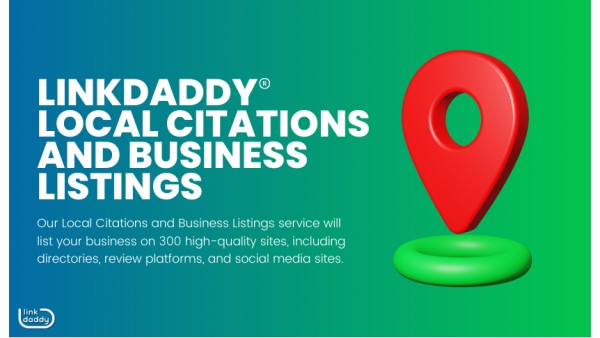LinkDaddy Cloud Services Press Release: Exclusive Announcements
LinkDaddy Cloud Services Press Release: Exclusive Announcements
Blog Article
Comprehending the Different Sorts Of Cloud Providers and Their Usages
In today's electronic landscape, the world of cloud computing uses a varied array of solutions that accommodate the needs of individuals and services alike. From Facilities as a Service (IaaS) to Software as a Service (SaaS), each type of cloud service serves a special objective and provides distinctive benefits. Comprehending the differences in between these different cloud models is crucial for optimizing operations, boosting scalability, and guaranteeing cost-efficiency in a significantly interconnected globe. By checking out the nuanced functionalities and applications of each cloud service, one can browse the intricacies of cloud computer with precision and insight.
Infrastructure as a Solution (IaaS)
Facilities as a Solution (IaaS) gives customers with virtualized computing sources online on a pay-as-you-go basis. This cloud computing version provides necessary IT facilities such as online makers, storage space, and networking without the demand for companies to buy and handle physical servers and data facilities. With IaaS, customers can scale sources up or down based on their needs, supplying versatility and cost-efficiency.
Among the key benefits of IaaS is its ability to rapidly provision and deploy facilities elements, making it possible for services to react rapidly to altering needs and market conditions. By contracting out facilities management to the solution company, companies can focus much more on their core service activities instead than dealing with the intricacies of hardware maintenance and upgrades.
Moreover, IaaS offers a high degree of dependability and protection, with service providers usually offering durable information back-up, catastrophe recovery, and cybersecurity actions. This assists ensure that critical company operations continue to be uninterrupted and data continues to be safeguarded versus possible dangers. linkdaddy cloud services press release. On the whole, Infrastructure as a Service simplifies IT procedures, enhances scalability, and minimizes funding expenditures for services of all dimensions
Platform as a Solution (PaaS)
Building upon the structure of Framework as a Service (IaaS), Platform as a Service (PaaS) provides a thorough environment for programmers to develop, deploy, and handle applications without the intricacies of underlying infrastructure administration. PaaS gives a system with tools and solutions that streamline the growth process, allowing developers to concentrate on composing code and structure applications instead of dealing with facilities concerns.

Software as a Service (SaaS)
Software as a Solution (SaaS) revolutionizes the method services gain access to and utilize software applications by using them on a registration basis through cloud suppliers. This cloud computing version gets rid of the need for companies to mount and maintain software application on individual devices, as every little thing is organized and managed centrally in the cloud.
SaaS supplies an affordable solution for services as they only spend for the software application they use without the added expenses of equipment maintenance or software program updates. It also offers scalability, allowing business to quickly adjust their software program requirements based on their demands.
Moreover, SaaS applications can be accessed from any type of device with a web link, advertising collaboration and adaptability among remote teams. Safety and security is a top priority in SaaS, with suppliers carrying out durable procedures to protect data kept in the cloud.
Popular examples of SaaS consist of customer partnership monitoring (CRM) software like Salesforce, productivity tools like Microsoft Office 365, and partnership platforms like Google Work area. SaaS continues to gain traction in the company world due to its comfort, cost-efficiency, and scalability.
Feature as a Service (FaaS)
With the development of cloud solutions like Software program as a Service (SaaS) improving software program shipment, Function as a Service (FaaS) stands for a standard shift in just how code is carried out in a serverless setting. FaaS permits programmers to write and carry out specific features or items of code in response to specific events without the demand to take care of the framework. This serverless computing design makes it possible for programmers to focus only on writing code to carry out specific functionalities, without concerning themselves with the underlying facilities or web server monitoring.
Features are executed in stateless containers that are spun up and down as needed, ensuring ideal resource usage and cost-effectiveness. By abstracting the infrastructure layer, FaaS streamlines growth, accelerates time to market, and enhances general dexterity in deploying cloud-native applications.
Storage as a Service (STaaS)
A fundamental element in cloud computer, Storage as a Solution (STaaS) offers individuals with a effective and scalable solution for handling data storage demands. STaaS enables companies to keep and get information from remote servers through the web, removing the requirement for on-premises equipment. This solution provides versatility by enabling users to pay just for the storage they make use of, making it a cost-effective service for businesses of all dimensions.

STaaS is especially helpful for businesses with fluctuating storage demands, as it supplies a reliable and protected storage space option without the need for substantial in advance financial investments. By leveraging STaaS, organizations can streamline their data administration procedures, boost access, and enhance information security in a cost-effective fashion.

Verdict
In conclusion, comprehending the different kinds of cloud services and their usages is essential for individuals and services looking to utilize the advantages of cloud computing. By making use of the ideal cloud service, companies can improve their performance, scalability, and adaptability in managing their IT facilities and applications.
From Infrastructure as a Solution (IaaS) to Software as a Solution (SaaS), each kind of cloud solution serves an one-of-a-kind purpose and supplies distinct benefits. linkdaddy cloud services. By discovering the nuanced capabilities and applications of each cloud solution, one can browse the intricacies of cloud computer with accuracy and insight
With the development of cloud services like Software application as a Service (SaaS) improving software application delivery, Function as a Solution (FaaS) stands for a paradigm shift in how code is executed in a serverless environment.In More Info verdict, recognizing the various types of cloud services and their usages is crucial for individuals more information and businesses looking to utilize the advantages of cloud computing. By utilizing the right cloud service, companies can improve their efficiency, scalability, and flexibility in handling their IT facilities and applications.
Report this page